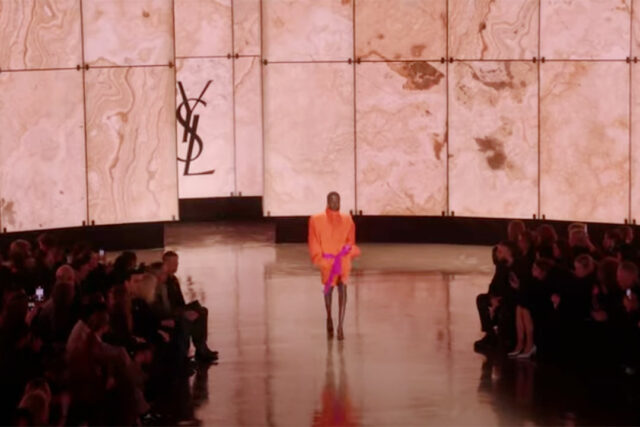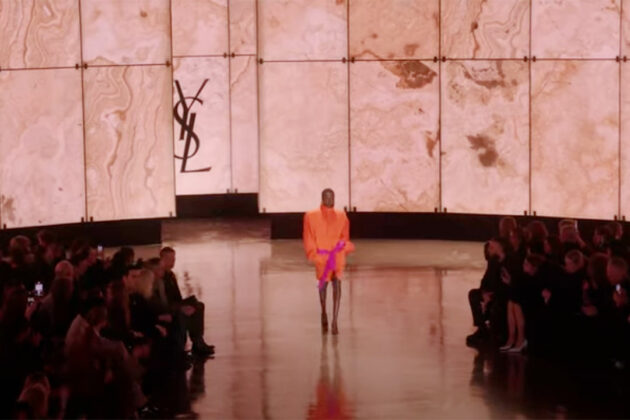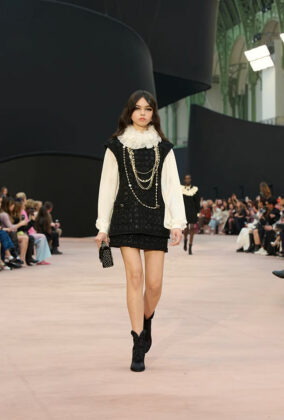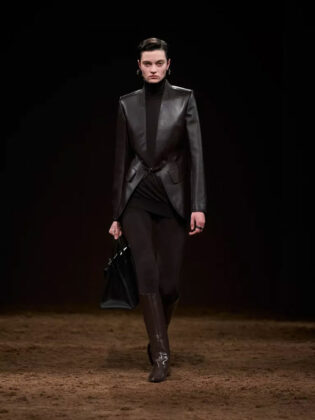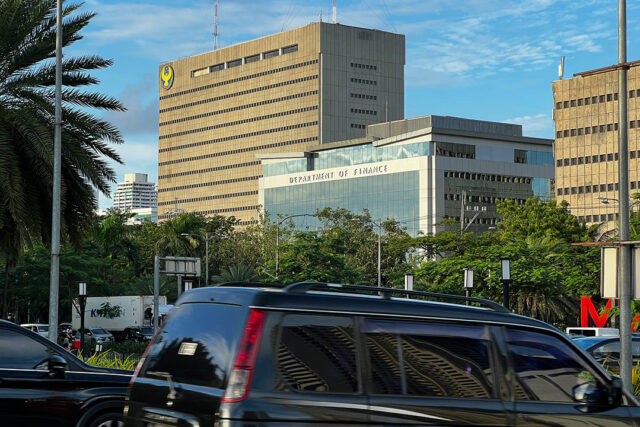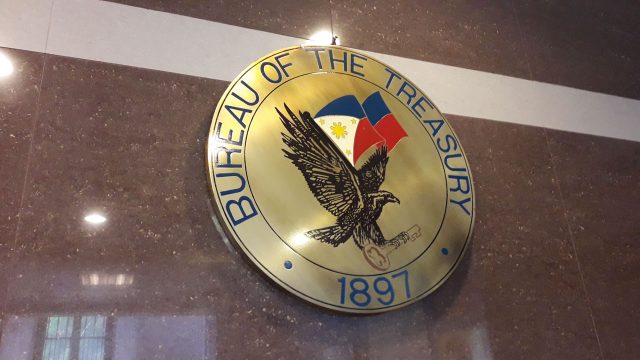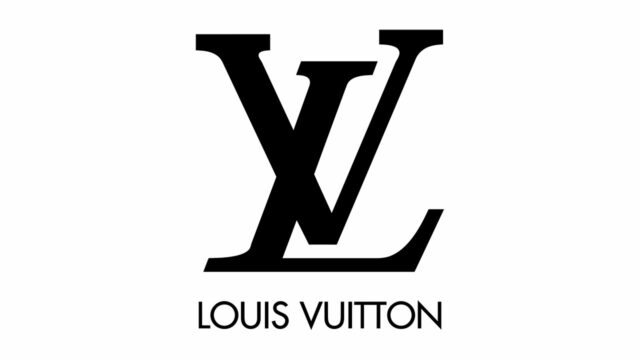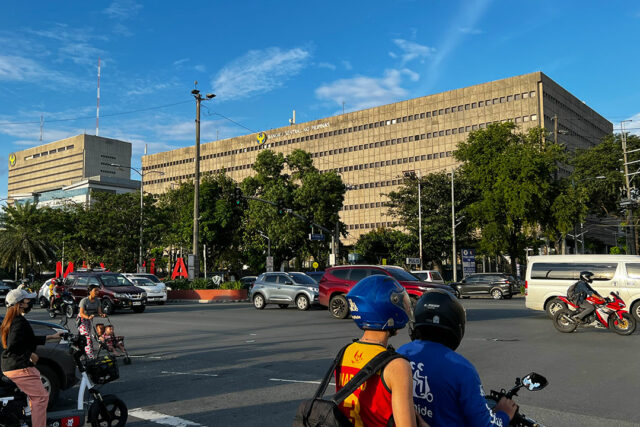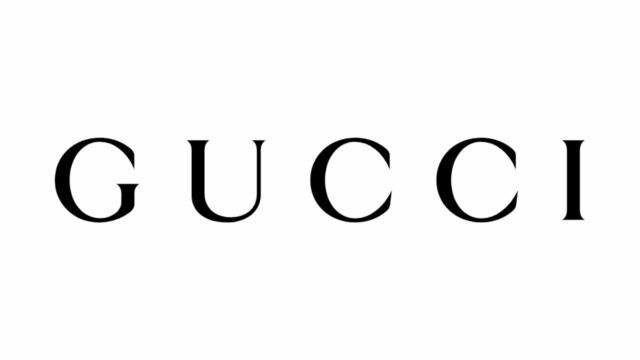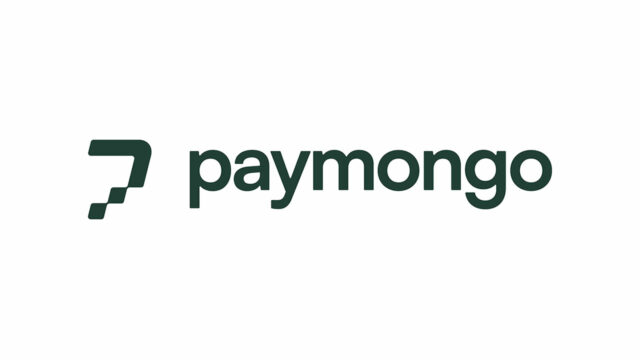Paris Fashion Week: Saint Laurent offers fresh shapes and bright fabrics
Chanel riffs the black bow; LV shows strong shoulders; slick leather at Hermes; Beckham shows curled hems; Stella McCartney’s feminine power suits; Dior’s ruffles
PARIS — Anthony Vaccarello, creative director of French fashion house Yves Saint Laurent, showed a runway lineup of evening-appropriate minidresses in bright colors and round, voluminous gowns, capping over a week of fashion shows in Paris.
Held near the Eiffel Tower after nightfall, the first model marched out on towering sling-back heels, her hands thrust deep into the pockets of a short dress in bright, marigold orange. The shoulders were broad and the sleeves were wide, while a tall collar rose to the model’s jaw line. Similar silhouettes followed, in colors like fuchsia, teal or yellow. (See the show here: https://www.youtube.com/watch?v=gqOeWBxN4_Q)
“Instead of speaking through ornament or padding, fabrics and precise construction shape the garments,” the Kering-owned label wrote in notes about the winter collection.
Partway through the show, the focus on volumes suddenly shifted to below a dropped waist, with a series of silky slip dresses that ballooned into hulking, rounded shapes that floated down the runway.
There were also trim, transparent dresses in a lightweight silicone fabric, with leopard or floral prints. Model Bella Hadid paraded a bright blue dress in stretchy lace.
Front row guests included famous Parisians Betty Catroux, Catherine Deneuve, Carla Bruni and Charlotte Gainsbourg.
CHANEL
Trim, tweed tailored suits and flowing dresses adorned by decorative black bows showcased Chanel’s fall-winter runway collection in Paris. (See the show here: https://www.chanel.com/us/fashion/collection/fall-winter-2025-26/ )
Under the soaring glass-and-steel dome of the Grand Palais, models strode through a sparse set, built around an enormous black ribbon sculpture curling up into the air.
Kicking off the show were suit jackets and mini-skirts or shorts in tweed, all in monochrome, some covered by dresses or skirts in sheer fabric with extra ruffles emphasizing the hem.
Black bows embellished the looks, whether tied under the neck, worn as hair attachments or fixed to brimmed hats, skirts or thick-heeled boots.
Moving away from the strict palette of black and ivory, the French fashion house also showed chunky knits in raspberry or mint green and a red tweed ensemble in the form of a bustier minidress, trousers and over-the-elbow gloves.
There were also glossy, black overcoats, oversize pearl accessories and a puffer jacket — distinctly Chanel, with rows of bows.
Chanel fans are awaiting the arrival of Matthieu Blazy, who fills the high-profile designer role left vacant since the departure of longtime Karl Lagerfeld collaborator, Virginie Viard, last June.
Blazy, whose first show will be in October, is credited with the recent success of Kering-owned Bottega Veneta.
LOUIS VUITTON
Louis Vuitton designer Nicolas Ghesquiere brought his Paris audience to the Gare du Nord for his fall-winter runway presentation, showing an eclectic and futuristic mix of styles that featured 1980s-flavored shoulders and scrunched boots along with a wide array of handbags.
Models marched through rows of seated guests as if charging through a bustling train station — only they were just across the street from the Paris train station, in an indoor courtyard. (See the show here: https://eu.louisvuitton.com/eng-e1/magazine/articles/women-fall-winter-2025-show )
The first model wore bright red trousers with a gathered, elastic waist, cinched at the ankles and paired with a colorful blouse that was covered with a smoky, translucent raincoat. Her hair was teased out, brushed mostly to one side.
Other sporty looks followed, including nylon jackets with hoods and zippered pockets that contrasted with dressier styles like lacy slip-dresses and skirts with piles of ruffled layers.
The LVMH-owned label, which welcomed guests with a clip from Kraftwerk’s “Trans-Europe Express” on repeat, added images from the album cover to some looks.
At the end of the show, French First Lady Brigitte Macron leapt out of her seat to embrace Ghesquiere. Macron, who sat alongside the family of LVMH CEO Bernard Arnault, is known to wear Vuitton for official outings.
HERMES
Hermes Nadege Vanhee presented a fall-winter 2025 collection of glossy coats, dresses, and trousers in dark-colored leather on Saturday, showing the sleek styles on a dirt-covered runway in Paris. (See the show here: https://www.hermes.com/us/en/content/338474-women-fall-winter-2025-runway-show/ )
Held at the Garde Republicaine, the sprawling stables of the French capital’s mounted gendarmes or police, the fashion house built a set with curved walls that resembled a Richard Serra sculpture — but were covered in brown felt.
Attendants raked the catwalk before the start of the show and the models strode out in riding boots, the toes stretched out into points, their silky hair bouncing.
They paraded skirts and micro shorts with tassels, a cropped jacket with quilted panels and long coats lined with felted wool, zippers running down the back — all of it in leather.
Extra layers came in the form of ribbed knit gloves that covered the arm and piles of sweaters worn like scarves around the neck and cinching outerwear. Contrasting with the mostly all-black looks were a few styles in beige, a brown marbled pattern molded into a fitted dress and a coat and trouser ensemble in bright green leather.
VICTORIA BECKHAM
Victoria Beckham showed a line-up of sleek, monochrome looks featuring curled hems and collars for her fall/winter catwalk outing, held in a stripped-down building in the center of Paris. (See the show here: https://www.youtube.com/watch?v=pZ_XJ5HwxgA
. The show itself starts at the 40-minute mark.)
Models marched steadily through the bare set in square-toed shoes — some flat, others with spiked heels — parading minimalist suits with long lapels that stretched down below the navel, tapered trousers, shoulder-baring dresses and long overcoats.
There were mini dresses, overcoats, and suit jackets with striking, rolled-up hems, while sweaters and jackets had collars similarly curled up at the neck.
Long, fluid dresses were trim, snug at the waist, contrasting with an elegant, bulked-up leather coat in taupe, worn like a minidress. Completing the looks were thick, curvy glasses and roomy tote bags.
After the finale, which was accompanied by a melancholy soundtrack, Beckham walked out for her bow and blew a kiss to her audience. Her family was seated together in the front row.
STELLA MCCARTNEY
Stella McCartney drew her audience to an office building for her namesake label’s winter 2025 runway outing on Wednesday, showing a feminine line-up of power suits with low waisted trousers and broad-shouldered jackets along with glittering eveningwear. (See the show here: https://www.youtube.com/watch?v=VFhJDcXpHnA
Guests including French First Lady Brigitte Macron, actor Cameron Diaz and designer and movie producer Tom Ford were greeted on an upper floor with a sweeping view of the outskirts of Paris and a packet of sticky notes on their seats, which were arranged around desks, water coolers, and hulking copy machines.
Model Natalia Vodianova opened the show, wearing an all-grey ensemble — a double-breasted jacket, paired with glossy boots that rose above the knees and matching gloves, her hair pulled into a neat ponytail. Adding texture, thick, hooded sweaters, jeans and suits embellished with tassels and elaborately draped minidresses followed.
“I was thinking the best of, the best of, the best of,” Ms. McCartney said after the show, noting she sought to relay her label’s day-to-night designs for her first show as an independent designer.
Ms. McCartney, who famously does not use leather or fur, in January announced she was repurchasing LVMH’s minority stake in her label, but continues to advise LVMH on sustainability matters.
“It’s just always been the goal, always the dream, and it’s the right time,” she said of the split.
For last week’s show, which featured pole dancers performing in sparkling leotards, Ms. McCartney said she wanted to put the spotlight on exotic dancing — rather than exotic skins, the use of which has “just got to end.”
DIOR
Christian Dior creative director Maria Grazia Chiuri presented a lineup of ruffled styles for the French fashion house’s fall-winter runway show, set to a dramatic backdrop of fiery meteorites, smoking icebergs, and a giant, prehistoric bird. (See the show here: https://www.youtube.com/watch?v=7vIiT07fMn8 )
The set was orchestrated by American director Robert Wilson, who sent models marching through changing scenery — under hovering rocks, pointy mountains of ice and across a striped runway.
They wore sharp-tipped boots, tailcoats and bustiers worn like shields, with knee-high socks, hair pulled into ponytails tucked into the clothing.
Ruffled collars, lace and sheer fabrics added softness to the designs, which included references to past creative directors, including a T-shirt marked “J’adore Dior” in a nod to John Galliano.
Held in a temporary structure set up in the Tuileries Gardens of the Louvre Museum, the show drew crowds and screaming fans angling for a view of celebrities, who included K-pop group Blackpink’s Jisoo.
At the end of the show, the models returned to the stage in pairs, and paused, facing the audience as feathers floated from the ceiling.
When the models left, the spotlight lit one of the entrances, and Chiuri emerged for her bow, prompting cheers from the audience. — Reuters

